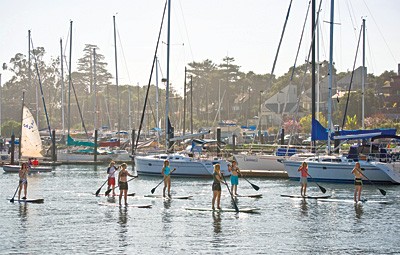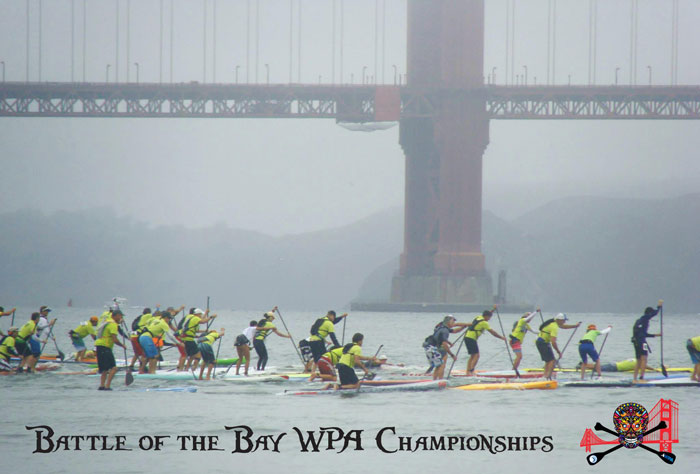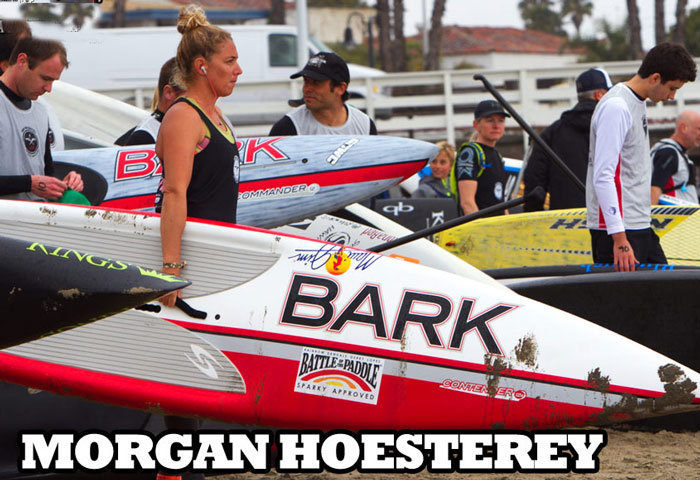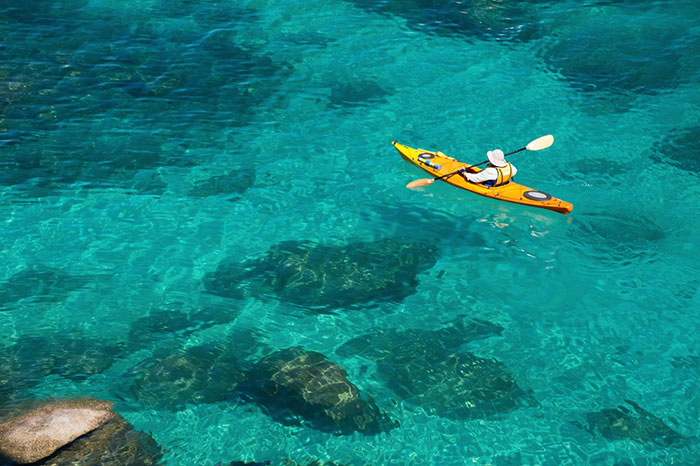- Tahoe’s Nevada Beach Tops the List of Hard-to-Book Campgrounds - 07/17/2024
- Cannabis Watershed Protection Program Cleans Up Illegal Grow Sites - 07/10/2024
- French Fire - 07/05/2024

A women’s SUP class in Santa Cruz Harbor. Photo courtesy of Covewater Paddle Surf
Though it began in the ocean, the growing wave of standup paddling stretches well beyond the beach
By Pete Gauvin
For decades, surf culture has spread inland far from its salty origins through the deepest channels of pop culture — marketing, media and movies.
But apart from fashion, and offshoot sports like skateboarding and snowboarding, there hasn’t been a surf-inspired water sport that has really transcended the country and attained widespread popular acceptance.
Until perhaps now.
Unlike ocean-bred sports before it like windsurfing and kiteboarding that require a lot of skill and appeal to a niche audience, standup paddling is capturing the imagination of a much broader slice of the public.
“The difference is the ease of entry into the sport,” says Duke Brouwer, director of events and marketing and team manager for Surftech, one of the first and largest SUP manufacturers. “And it’s been very glamorized by people like Laird Hamilton, Marisa Miller, Matthew McConaughey, Jennifer Anniston and others.”
Rather than just attracting an elite few, standup paddling is a populist activity that has captivated broad swaths with its short learning curve, visual appeal and versatility.
But the potential of SUP wasn’t obvious to Brouwer at first.
Less than a decade ago, Surftech had made a bunch of Mickey Munoz-designed 12’ longboards that were intended as tandem boards, lifeguard rescue boards, or as floaty picnic tables for older surfers. “We couldn’t get rid of them,” he says.
Even after legendary watermen Laird Hamilton and Dave Kalama adopted them for use as stand-up boards, Brouwer doubted that it would have widespread appeal. “I thought it was going to be a limited thing. Entering the surf zone on a 12-foot board with a paddle is just not going to be welcomed.”
Then one day he and some friends took the big boards out to a local reservoir and paddled around exploring coves and getting a good work out. “We felt like we made this massive discovery,” he says.
Wherever it Floats
Today, stand up is popping up in all kinds of places no one could have envisioned.
Whitewater kayakers are taking it to the river.
Fly fishermen are using SUPs as mobile casting platforms on mountain lakes, turning heads of guys wallowing in float tubes because they can actually see the fish from their vantage point.
Personal trainers are using SUP boards as floating exercise mats to get people out of the gym.
There are even SUP yoga classes.
“What better place than to be out on a lake doing yoga with birds singing rather than be inside with a machine making water sounds,” says Brouwer.
But the biggest factor behind the SUP swell is just people wanting to get out on the water for recreation.
“We haven’t seen this type of growth in anything before,” he says. “We’ve been selling every SUP we can make. It’s not like there’s just one channel for SUPs; there are many.”
The Race Scene
One channel that is exploding in popularity is the race scene. In California, there are races nearly every weekend (see sidebar).
Standup paddling is even being considered for inclusion as an Olympic sport. “It’s not if, but when,” Brouwer says.
“The number of races has easily doubled this year,” says Scott Ruble, owner of Covewater Paddle Surf in Santa Cruz and regional director of the World Paddle Association, a recently formed sanctioning body for SUP competitions.
There are six races in the WPA Nor Cal/Tahoe region this year — the Thunderbird Run (June 11) and Ta-Hoe Nalu (Aug. 13) on Lake Tahoe, the Jay Race (June 25) and Covewater Classic (July 16) in Santa Cruz, the Surftech Day at the Beach at Folsom Lake (Aug. 27), and a race on San Francisco Bay to be announced.
Revitalizing Surfers
Ruble, who worked in the surf industry for a decade when he was younger, first tried standup at the urging of a friend who’d just returned from Hawaii.
“I tried it at the harbor and that light bulb went on. I knew from that moment it would definitely be part of my water time,” he says. “It’s a way to spend time on the water with my wife, get some exercise and ocean time when the waves are small.”
While SUP has washed inland, on the coast it’s been a fountain of youth for many surfers, Ruble says.
“It’s like the joy and discovery of learning to surf all over again. It’s really revitalized a lot of surfers I think. They don’t have to lie down on their stomach and compete with a bunch of 13 years olds for waves at a single peak. They can paddle along the coast and surf little breaks along the way.”
Barriers
The biggest hurdle to getting into the sport is cost, says Ruble. “$900 to $1600 bucks for a board is a lot of money for people … We try to tell people that the investment is going to pay off, not only in fun and enjoyment, but in physical and health benefits.”
Another barrier, particularly for women, is that SUP boards can be bulky and heavy to transport. It’s such a deterrent that Ruble, a former surfboard shaper, decided to develop his own boards for women. Covewater Standup Paddleboards is releasing its women’s specific design this summer.
You can’t have a revolution after all, unless everyone can participate.
SUP Film Screening: As a prelude to the Covewater Classic races on Saturday, there will be an SUP movie night on July 15 at the Rio Theatre in Santa Cruz. The screening will feature two inspiring films, “Destination 3 Degrees” and “Lake Tahoe Circumnavigation,” with proceeds benefiting Save Our Shores. www.covewaterclassic.com













